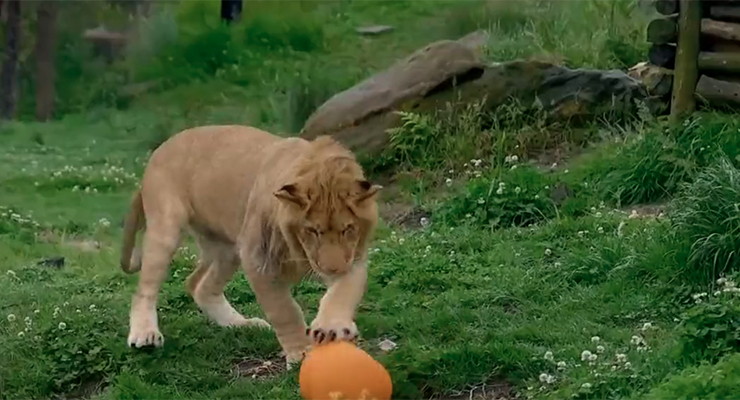
If a war, “planet killer” asteroids and the tail-end of a three-year global pandemic weren’t enough for the year 2022, yesterday at 6.30am five lions escaped from Taronga Zoo in the northern Sydney suburb of Mosman.
How did they get out? Well, if you ask Mark Latham (no one did), it’s because Taronga Zoo was too busy being “woke” to enclose its animals properly. OK, sure.
A statement from the zoo says there was “an integrity issue” with a containment fence and the animals were swiftly moved to a secure holding area pending a full review of said integrity issue.
No one was harmed in all the excitement. The lions didn’t make it far, all the emergency processes worked as they were supposed to, and the animals basically took a quick look around before calmly returning to their enclosure.
So things could have been much worse. How much worse, you ask? Well, here are a few times when animal escapes got a little more out of hand.
Cobra on the loose in the Bronx
Lions are quite big and noticeable. If, say, one of the escapees had jumped on a ferry to Circular Quay someone would have spotted it and called the authorities. Not so for a poisonous Egyptian cobra, which escaped the Bronx Zoo in the US in 2011 and evaded capture for six whole days.
The 20-inch female was found coiled up in a little ball not far from her enclosure, but we all know that if she’d wanted to she could’ve easily jumped on a subway and be living the life in Manhattan right now, especially with the fame she garnered — a Twitter account for the escaped cobra (it’s still tweeting!) has garnered 138,000 followers.
Monkey business
Lions have a fearsome reputation, thanks to Scar and co, but an escaped animal most likely to inflict damage on humans is a chimpanzee. This Wednesday morning a “code one” was called to alert zoo keepers about the escaped lions, but the last time that code was used at Taronga wasn’t actually that long ago.
In January 2021, a contractor spotted a chimp casually squatting outside its enclosure. The dangerous “code one” was called and the area put on alert, although, again, the chimp eventually returned itself to its enclosure (must be good water at that zoo). And let’s not forget the baboon who escaped from the Royal Prince Alfred Hospital in Sydney’s inner west while on his way to get a vasectomy.
Calauit Island, the Philippines
It’s bad news when a dangerous animal escapes and enters the human world, but what about when the humans return to their island to find it overrun with dangerous animals?
In 1977, former Philippines president Ferdinand Marcos (dictator, kleptocrat and father of current President Bongbong Marcos) and his wife Imelda displaced dozens of families from the island of Calauit to create a free-roaming safari park on the island with 15 giraffes, 15 zebras, 12 gazelles and 20 impalas, all shipped in from the east coast of Africa.
When the family lost power in 1986, the park stopped receiving funding. Local inhabitants returned to their home island to find it overrun with exotic species that were not adapting to local conditions. They began living with the animals and frequently hunting the introduced species, with the safari staff (down to 20 from 100) unable to do anything about it.
The wolf that didn’t want a room of her own
In Los Angeles in 1979, Virginia the wolf had had enough of a room of her own and choose freedom, climbing fences and trees to escape Los Angeles Zoo. Wolves don’t traditionally climb trees, but in her thirst for open horizons, Virginia did what all women did and adapted to escape the clutches of the patriarchy. It’s actually unclear whether Virginia was ever recaptured, so it’s possible the inhabitants of LA just live surrounded by wild tree-climbing wolves.
Parakeets on the prowl
The big problem with escaped exotic species — besides the thought of getting eaten by a lion on your way to Coles — is that it can greatly disturb the natural pecking order. In the 1960s, rich Dutch people had a penchant for importing colourful rose-ringed parakeets from Pakistan to the flat lands to brighten up their aviaries. Inevitably, some of these birds escaped and took over various cities in the Netherlands. They’ve since become quite a big problem; they roost outside Dutch Parliament in The Hague, disturb the throngs of tourists in Amsterdam and ultimately steal food and shelter from the local Dutch birds.
Just imagine: if the Taronga Zoo lions had stayed out for any longer, we humans may have been demoted to the second most powerful species here in Australia.








jeez, Latham is a tiresome turd
At least the ALP isn’t constipated.
But it happened in Tinseltown in the national media’s back yard. Did anything else happen that day ?
As I understand the various reports no lions “escaped” from Taronga Park Zoo nor were on the “loose”, whether heading for the bus to the CBD or for a breakfast feast at Balmoral Beach. Rather, they had slipped out of the lion enclosure to wander around their outer fenced area: the one designed to keep us mere mortals at bay. Clearly, they found that territory not to their liking and so retreated home.
Dear Imogen: poisonous/venomous – a common malapropism. A cobra is venomous but a fungus is poisonous. The snake envenomates you but the fungus poisons you if you eat it. If you ate the cobra, you’d be fine.
About ten years ago here at the Zoo in Perth the senior female orang utan led four others out of the enclosure for a walk around the Zoo. She herself was a very large, imposing figure. After assuring themselves that all was in order and that the staff were on the ball, she led the troop back to their enclosure.
Perth Zoo, give yourself five stars for quality of accommodation.